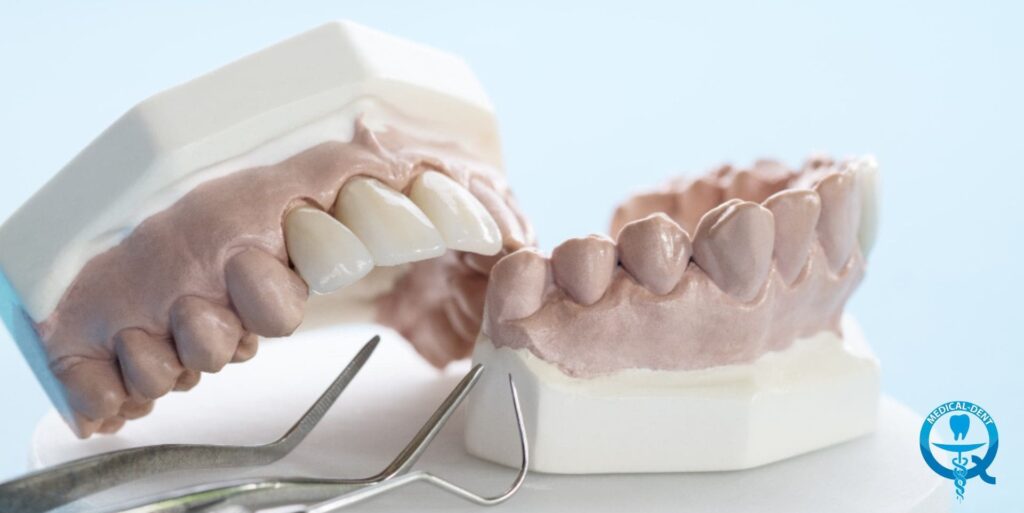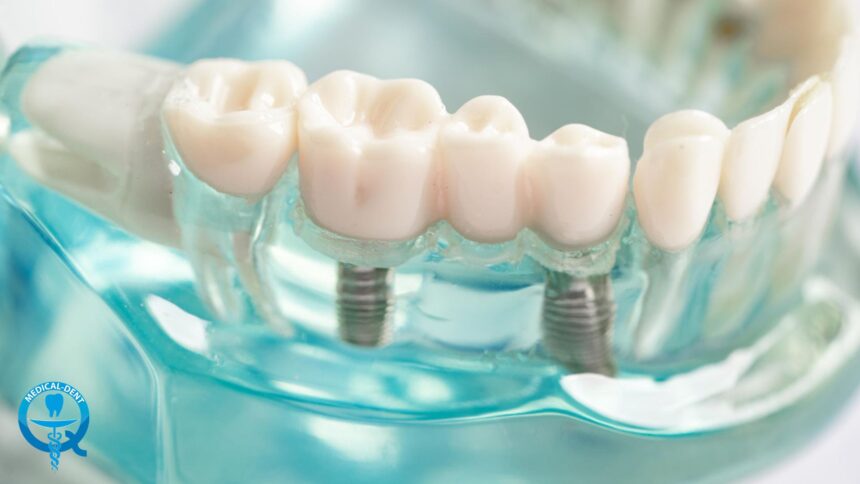If you are struggling with larger gaps in your teeth then an implant-supported bridge could be a great solution for you. Find out what this prosthetic restoration looks like, the procedure itself and how much it costs in our article.
Implant-supported bridge - for whom is it a good solution?
Before going on to answer this question, we would like to remind you that missing teeth absolutely must be replaced. Otherwise, there will be negative consequences for the state of the oral cavity and subsequently the whole body. You can read more about this in our article "A missing tooth - when you need to fill the gap left by an extracted tooth'.
Coming back... Implant bridges are used in cases where patients have lost one or more teeth.Here implants, or a bridge over implants, are a great solution. Why?
Currently, implants are the most durable prosthetic restoration giving the most natural effect. For other reasons why it is worth opting for this solution, we wrote in the text "6 reasons why dental implants in the UK are a good choice".
However, implant-supported bridges are not only used for for larger gaps in teeth, but also when teeth are so badly damaged that they are unsuitable for restoration with crowns or fillings.
It is also an excellent solution for people who have previously used partial dentures.

Prosthetic bridge and implant-supported bridge - what's the difference?
The first requires grinding the teeth next to the missing tooth. This can weaken the tooth and put you at risk of sensitivity. In addition, a prosthetic restoration is cemented onto natural teeth. Occasionally, it can become unsealed or even decayed, resulting in the loss of the tooth the bridge is held on and much bigger problems.
Implant-supported bridges do not disturb the natural teeth. Importantly, if the colour of your teeth changes over time you can replace the bridge and match it to the rest of your teeth.

What does this prosthetic restoration and the procedure itself look like?
An implant-supported bridge resembles a standard bridge in construction. The porcelain crowns are supported by two pillars, in this case implants
Before these can be implanted it will be necessary to implantology consultation, during which you will learn the details of the treatment and its price. We wrote more about what such a visit looks like in the article "Implantology consultation - what does it look like".
If this is the solution for you, the first stage of the procedure will be to incise the gum and drill a hole in which the implant will be placed. This will fuse with the bone over time.
And this is the second stage - healing. Once the stitches are in place, you will have to wait a few months for the tissues to heal. How long exactly? On average between 2 and 6 months depending on the position of the tooth.
The last and final stage is the placement of the implant-supported bridge, i.e. the attachment of the prosthetic restoration to the screws.

Implant-supported bridges - price
There is no definite answer here, as the price of an implant bridge will depend on the condition of your mouth, the implant and the crown you decide on.
In our practice, an implant starts at £1000, the cost of a zirconia bridge £700.
If prices scare you at this stage we have two important pieces of information. The first - this prosthetic restoration will last you a lifetime. Secondly, in our office you can take advantage of the instalment system (it is regulated by the Financial Conduct Authority - FCA number 619628). The first 12 months are zero interest, meaning you pay back as much as you paid for the treatment. Thus, an implant bridge in the UK can cost you from £142 per month.
If you want to learn more we recommend our text "Instalment scheme for dental treatment in the UK" or contact get on with it.

